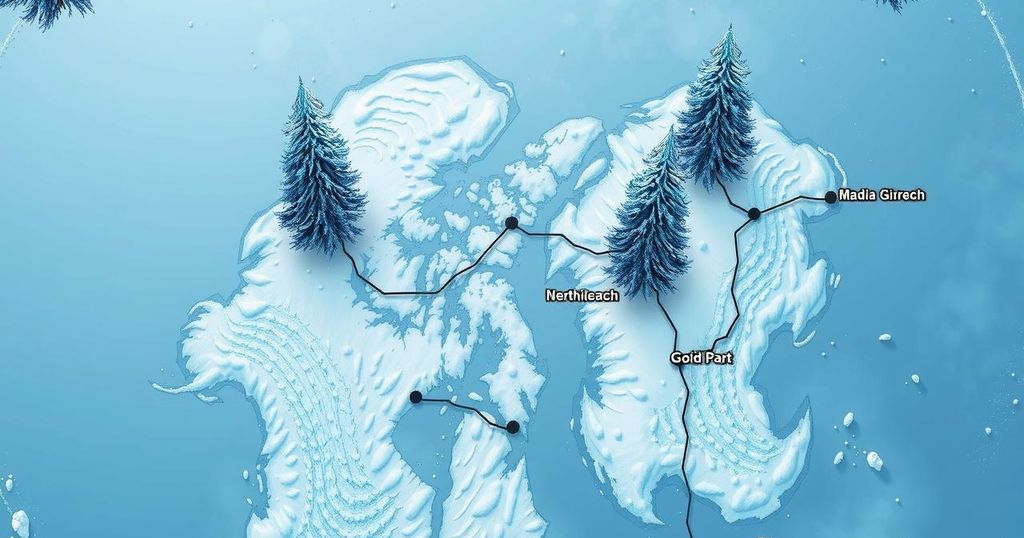The New Year has begun with an Arctic outbreak across North America, bringing significantly lower temperatures, especially in Eastern Canada and the U.S. Cold air masses from Siberia are pushing temperatures down below normal, affecting many cities. These changes are predicted to ease toward the end of next week, but the current chill marks a notable weather event for the region.
The New Year has commenced with a significant Arctic chill sweeping across North America, as cold air masses from Siberia make their way southward. This phenomenon, identified as an Arctic outbreak, has resulted in temperatures plummeting below normal levels in Eastern Canada and the United States. According to Brian Proctor, a meteorologist at Environment Canada, the term “Arctic blast” is often used in the U.S. to describe this occurrence, which is known for its capacity to generate extreme cold.
As temperatures have begun to drop, communities in Kitikmeot are experiencing severe cold conditions, with readings plummeting below -30 degrees Celsius and wind chills dipping to -50 degrees Celsius. Even Iqaluit, previously enjoying mild weather, is anticipating a drop to -17 degrees Celsius by January 8. Eastern Canada is likewise feeling the chill, with temperatures falling from -1 degrees Celsius on January 2 to a daytime high of -11 degrees Celsius on January 5.
Although not unprecedented for this region, such temperature declines are notable; for instance, Philadelphia, Pennsylvania, is forecasted to reach temperatures below -17 degrees Celsius for the first time in over a century. Likewise, Washington, D.C., is also expected to experience similar lows not witnessed since 2019. Fortunately, projections indicate that temperatures will begin to rise towards the close of the upcoming week.
Historically, Arctic outbreaks occur with notable frequency during this time of year. Nevertheless, previous occurrences, such as the significant outbreak in January 2019, were responsible for over 20 fatalities in the United States and extensive flight disruptions due to extreme wind chills reaching lower than -49 degrees Celsius.
An Arctic outbreak refers to a significant drop in temperatures caused by frigid air masses originating from polar regions. Such occurrences are common in winter, particularly in North America, where air descending from the Arctic affects the temperatures across vast areas. The movement of cold air can result in severe weather conditions and has the potential to cause serious health and safety issues, as recorded during past outbreaks. Meteorologists use terminology like “Arctic blast” to emphasize the severity of such cold spells, which can last several days and impact various regions, including southern states.
In summary, the Arctic outbreak ushering in the New Year is set to bring record-low temperatures across Eastern Canada and the United States, impacting several urban centers. While this phenomenon is characteristic of winter, the current cold snap will be particularly notable for areas unaccustomed to such extremes. It is essential for residents to remain vigilant and prepared for the harsh weather conditions ahead.
Original Source: nunatsiaq.com






